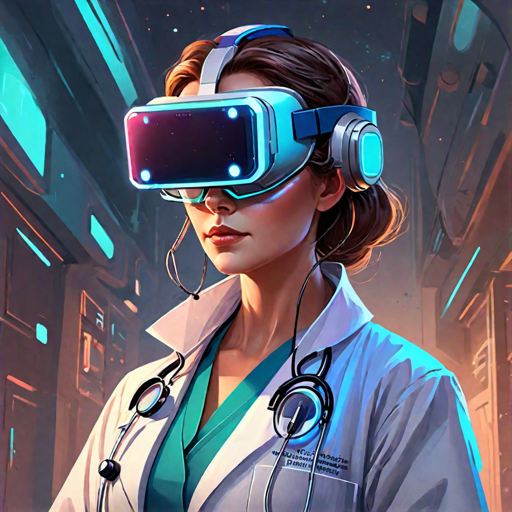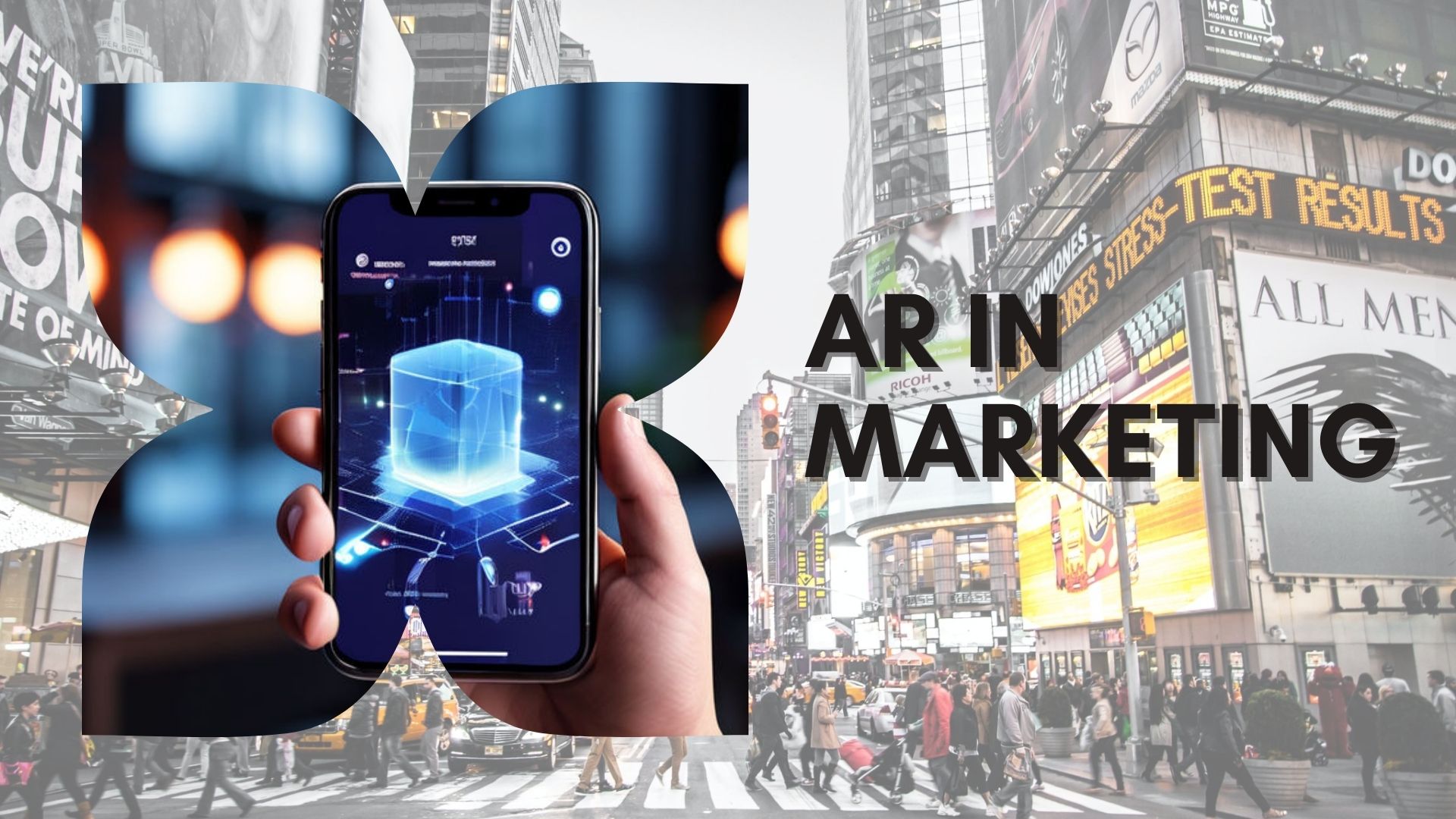
Asking us to pick our favorite technology between augmented reality (AR) and virtual reality (VR) is like asking a parent to choose their favorite child. They each have different characteristics that are better suited for specific situations. However, like proud parents, we like to brag about the capabilities of these technologies. Yes, we are those parents.
In this blog, we are not only going to discuss how augmented reality is transforming the transforming process, but how virtual reality is also playing an equally important role. From enhancing medical procedures to optimizing manufacturing processes, and from immersive retail experiences to interactive automotive training, AR and VR are kicking through barriers of learning and skill development. Believe us, if they were kicking or biting anything other than barriers it’d be straight to bed with no supper.
We picked a few key industries to explore and imagine how AR & VR will have a profound impact on training.

Medical Training
AR: Augmented Reality (AR) technology is reshaping medical training by providing invaluable tools for enhancing anatomical understanding. For example, AR headsets can overlay detailed 3D models of organs onto cadavers during surgical training sessions, allowing medical students to visualize internal structures with unprecedented clarity and precision.
This immersive experience not only improves spatial awareness but also facilitates a deeper comprehension of complex anatomical relationships. Moreover, AR enables real-time guidance during procedures, offering step-by-step instructions and visual cues to enhance surgical accuracy and efficiency. By integrating AR into medical training, institutions can elevate the quality of education and better prepare healthcare professionals for real-world scenarios.
VR: Virtual Reality (VR) offers unique opportunities for medical training by simulating realistic surgical environments and procedures. Surgeons can completely immerse themselves in high-fidelity VR simulations that replicate complex surgeries, allowing them to practice and refine their techniques in a risk-free virtual setting. VR simulations also enable collaborative learning experiences, where medical professionals can engage in team-based training exercises and share insights from diverse perspectives. Similar to AR, VR technology facilitates the development of muscle memory and procedural skills through repetitive practice, ultimately leading to improved surgical outcomes and patient safety.
Manufacturing Training
AR: Augmented Reality (AR) is revolutionizing manufacturing training by providing real-time guidance and information to workers on the factory floor. With AR-enabled devices such as smart glasses, technicians can access contextualized instructions overlaid onto machinery, simplifying complex tasks and reducing human errors. This hands-free approach to training enhances productivity and efficiency in manufacturing operations while minimizing the need for extensive manuals or documentation.
Additionally, AR facilitates remote assistance, where experts can remotely guide and support field technicians in troubleshooting and problem-solving scenarios, leading to faster resolution times and minimized downtime. By integrating AR into manufacturing training, companies can streamline their operations and empower employees with the knowledge and skills needed to succeed in dynamic industrial environments.
VR: Virtual Reality (VR) is transforming manufacturing training by providing immersive simulations that replicate real-world scenarios and environments. Trainees can experience hands-on learning through VR simulations that simulate assembly line tasks, equipment operation, and safety protocols in a safe and controlled virtual environment. This interactive approach to training enables workers to practice their skills without the risk of injury or damage to machinery, leading to increased confidence and competence on the factory floor.
Simulations can be custom to specific manufacturing processes and workflows, allowing companies to customize training programs according to their unique requirements and challenges. Through implementing VR technology in manufacturing training, organizations can accelerate the onboarding process for new hires, improve employee retention, and ultimately enhance operational performance.
Retail Training
AR: Augmented Reality in retail training is enhancing customer interactions and experiences by creating a situation where employees can utilize AR-enabled devices to provide personalized assistance to customers, such as visualizing product features, demonstrating usage, or showcasing product variations in real-time. This immersive approach to training not only improves customer engagement but also empowers employees with the knowledge and tools needed to deliver exceptional service.
AR can also be used to create interactive shopping experiences, where customers can virtually try on clothing or visualize furniture in their homes before making a purchase, enhancing their confidence and satisfaction. Now, companies can differentiate themselves in a competitive market and drive sales through enhanced customer experiences.
VR: Virtual reality offers diverse customer scenarios and environments in a controlled environment. Retail employees can engage in immersive VR simulations that replicate real-world retail environments, allowing them to practice handling various customer interactions and situations. From managing crowded stores to resolving customer complaints, VR simulations provide employees with the opportunity to develop their communication and problem-solving skills in a risk-free environment.
Additionally, VR training enables scalability and flexibility, as employees can access training modules remotely and at their own pace, reducing the need for in-person training sessions and minimizing disruptions to daily operations. By embracing VR technology in retail training, companies can improve employee performance, boost customer satisfaction, and ultimately drive business success.
Automotive Training
@bstegmedia This is the next big leap in tech. Just wait till it’s the size of regular sunglasses 😉 #cartok #carsoftiktok #fyp #virtualreality #vr #metaquest3
♬ prolly my spookiest beat (slowed + reverb) – prodby668
AR: Augmented Reality has the ability to provide real-time guidance and information to technicians during maintenance and repair tasks. AR-enabled devices such as smart glasses can overlay digital information onto physical vehicles, providing technicians with step-by-step instructions, schematics, and diagnostic data directly within their field of view.
This hands-free approach to training enhances efficiency and accuracy in automotive maintenance, reducing repair times and minimizing errors. Like other industries, AR facilitates remote assistance, where experts can guide and support field technicians in real-time, leading to faster problem resolution and improved service quality. By integrating AR into automotive training, companies can optimize their service operations and empower technicians with the knowledge and tools needed to deliver exceptional customer experiences.
VR: When it comes to VR, trainees can engage in VR simulations that can randomize various driving conditions, allowing them to practice and refine their skills in a safe and controlled virtual environment. From maneuvering through challenging road conditions to familiarizing with new vehicle models, VR training enhances driver safety skills and situational awareness. Additionally, VR simulations enable trainees to experience scenarios that may be difficult or dangerous to replicate in real-world training, such as emergency maneuvers or adverse weather conditions.
Education
AR: Students can use AR-enabled devices such as smartphones or tablets to explore virtual 3D models, historical reconstructions, and scientific simulations, bringing abstract concepts to life. This hands-on approach to learning promotes engagement, curiosity, and critical thinking skills, as students interact with digital content in real-world contexts. AR has the unique ability to enhance accessibility and inclusivity in education, as students with diverse learning needs can benefit from customizable learning experiences tailored to their individual preferences and abilities.
VR: Students can immerse themselves in virtual classrooms, historical settings, or scientific simulations, allowing them to explore concepts and phenomena in ways that would be impossible in a traditional classroom setting. This immersive approach to learning fosters curiosity, creativity, and collaboration, as students engage in interactive experiences that transcend the boundaries of time and space. VR enables personalized learning experiences, as students can progress at their own pace and revisit challenging concepts until difficult tasks are completed.
In Conclusion
We totally get it, you don’t want to hear us brag about our over-achieving kids and the A’s on their report cards. Joking aside, AR and VR are revolutionizing the way we approach learning and skill development. Integrating AR & VR technology is setting a new standard for businesses across all industries. The imperative to adopt AR & VR as part of your strategic initiatives for productivity, innovation, and customer satisfaction is clear.
Which is the right technology for you and your business? Contact us for a free consultation and we’d be happy to help you explore the seemingly endless possibilities.








